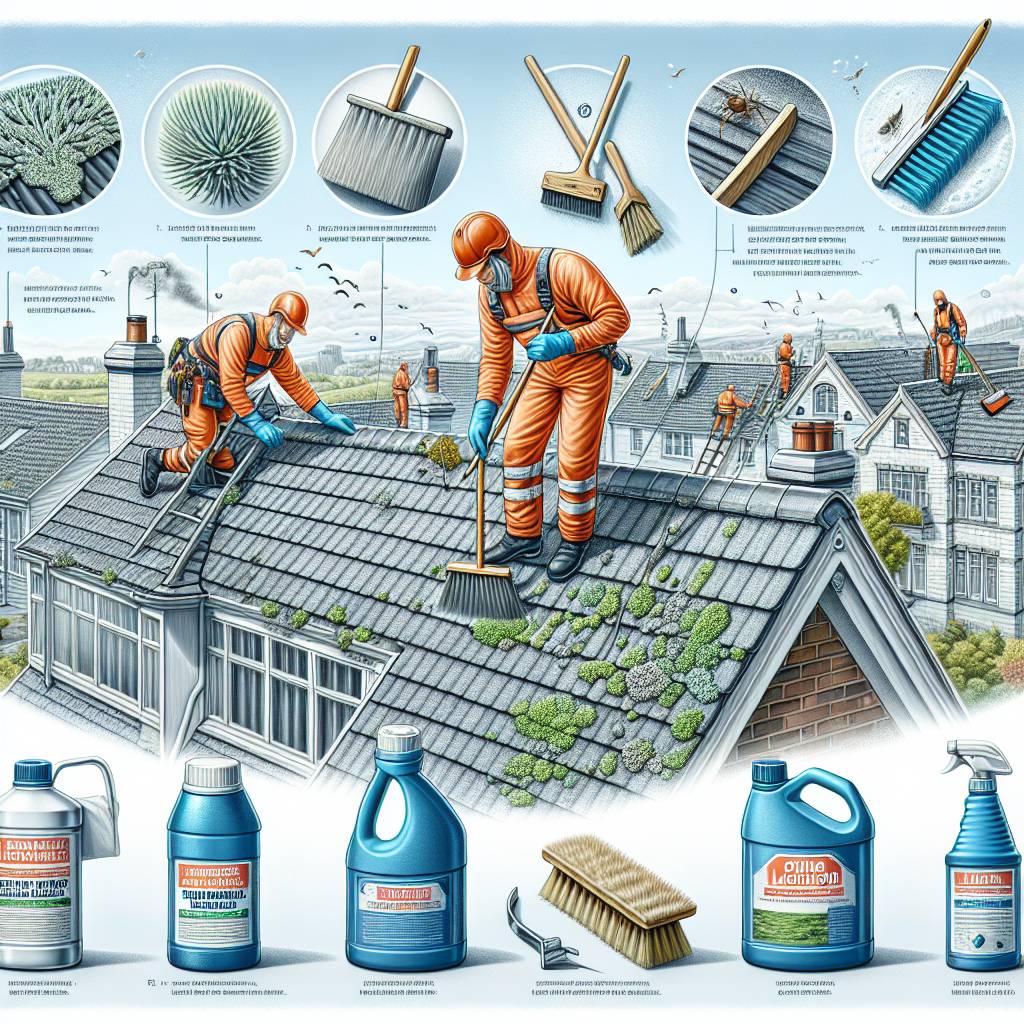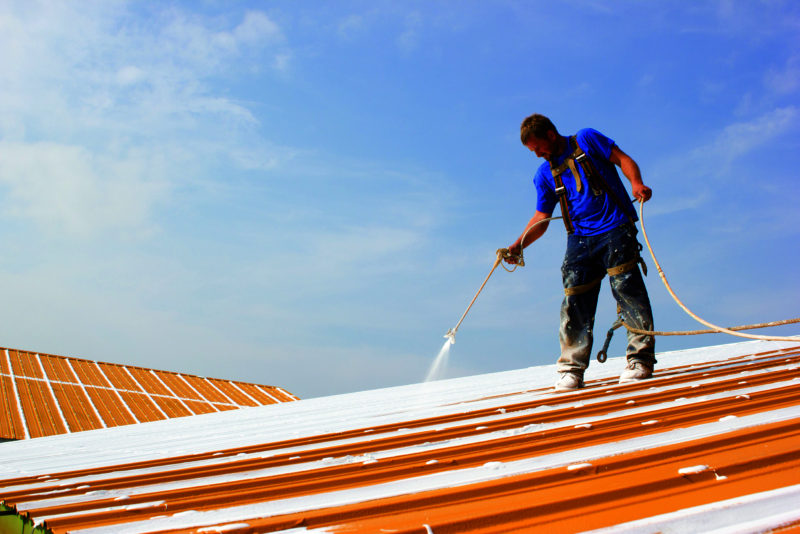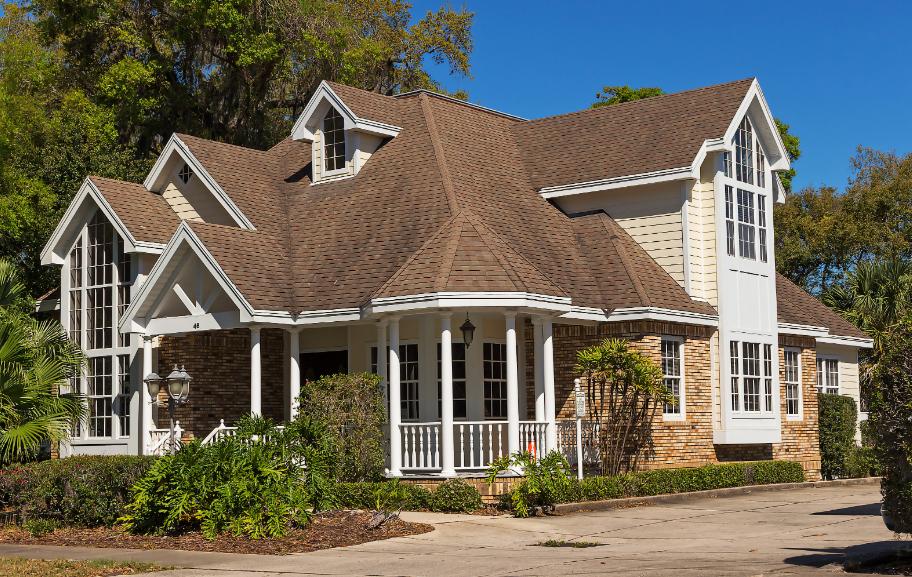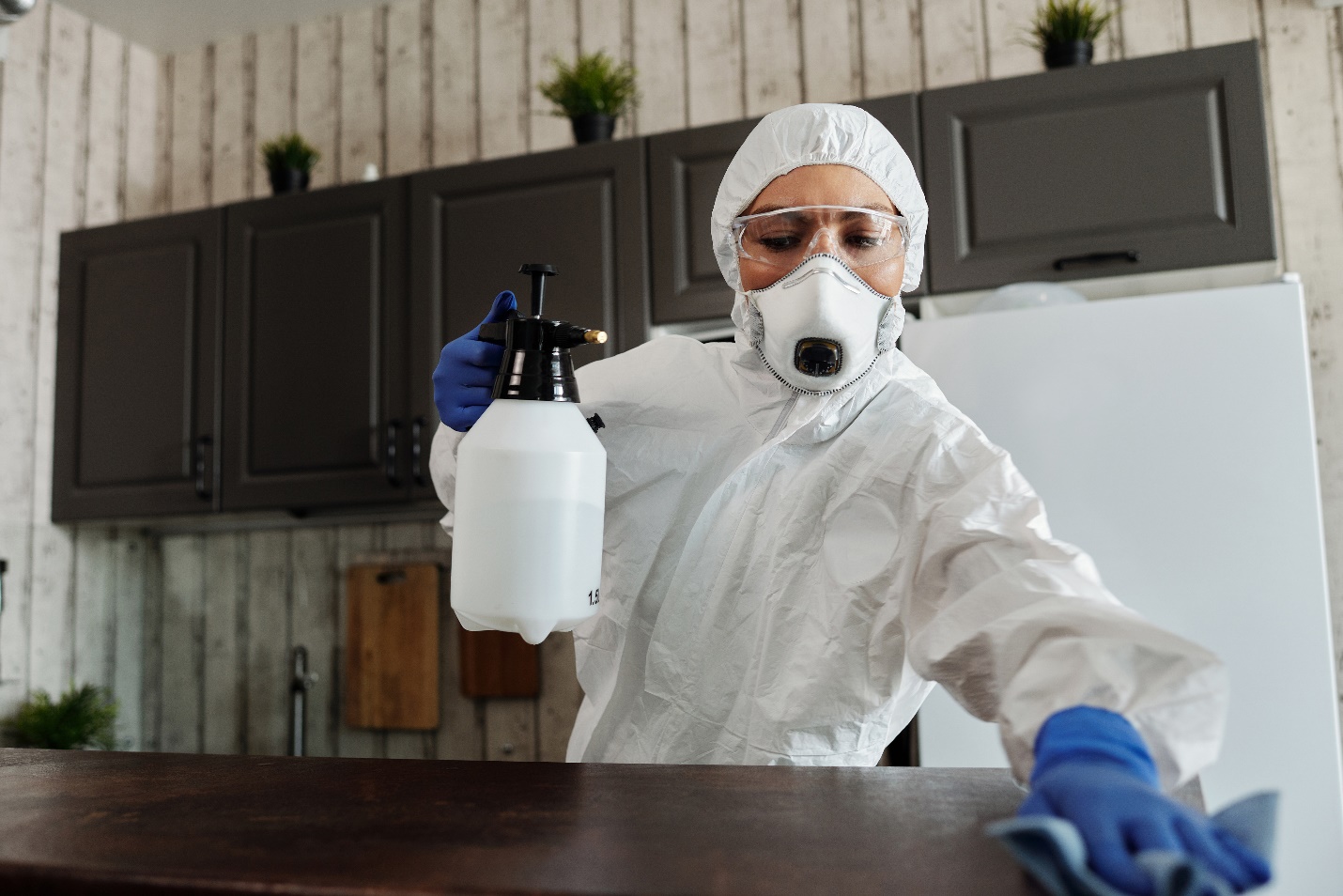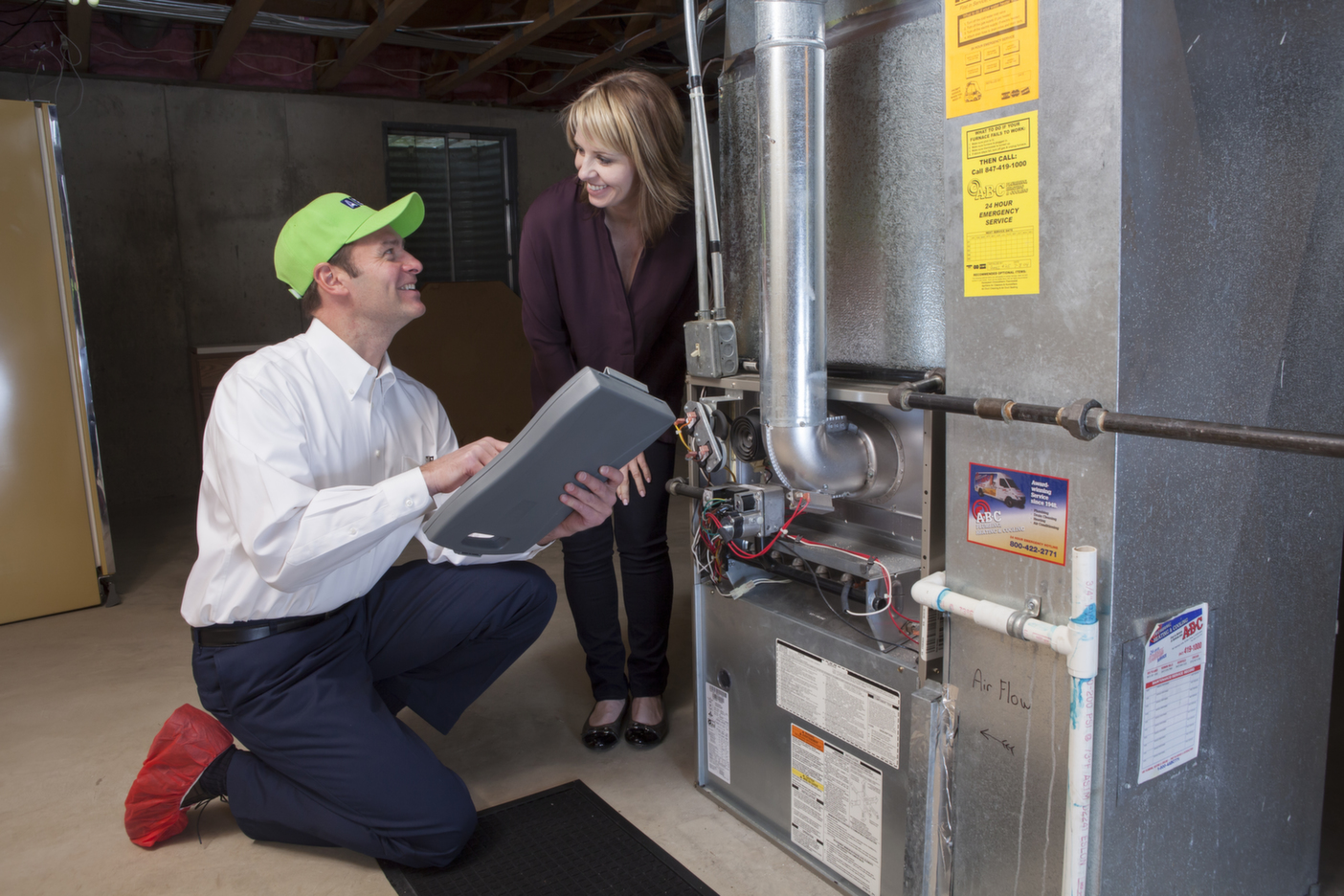Lichen growth on roofs can be a pesky and unsightly issue, especially during the wet seasons. However, with some simple preventative measures, you can keep your roof lichen-free all year round. In this post, we’ll explore effective tips to tackle lichen growth head-on and protect your roof from potential damage.
Prevention is always better than cure. By implementing these seasonal tips, such as using copper flashing and aluminum flashing, you can save yourself the hassle of dealing with costly roof repairs down the line.
Key Takeaways
- Regularly inspect your roof to identify lichen growth and take timely action to prevent further damage.
- Ignoring lichen on roofing materials can lead to structural damage and reduce the lifespan of your roof.
- Seasonal cleaning and maintenance, especially in humid climates, can help prevent lichen growth and extend the longevity of your roof.
- DIY methods for lichen and moss removal, such as using a mixture of water and bleach, can be effective but should be performed with caution to avoid damage to the roof.
- Consider professional lichen removal services for extensive or stubborn lichen growth to ensure thorough and safe removal.
- Implement preventative measures like installing zinc or copper strips to keep algae, fungus, and moss at bay, ultimately preventing lichen growth.
Understanding Lichen and Its Growth on Roofs
Understanding Lichen and Its Impact on Roofs
Lichen, a combination of algae and fungi, thrives in areas with high humidity and shade. This green algae commonly grows on outdoor surfaces, posing potential damage to the roofing materials if left unaddressed. The presence of lichen is often an indication of excess moisture and lack of sunlight, making it crucial to take preventive measures against its growth.
Lichens are known for their ability to survive in various environments, including rooftops exposed to different weather conditions. Their growth on roofs can lead to discoloration and staining, compromising the aesthetic appeal of the property. Moreover, wet lichens can penetrate zinc and copper roof surfaces over time, causing structural damage that may necessitate costly repairs or replacements.
To prevent such issues caused by lichen growth, homeowners must be proactive in implementing seasonal maintenance strategies tailored to their specific climate and environmental factors.
Seasonal Maintenance Practices
Regular Roof Inspection
Regularly inspecting the roof for any signs of lichen growth is essential for early detection and intervention. Look out for greenish patches or small raised structures along shingles or tiles as these could indicate the presence of lichens. By identifying these signs of wet lichens growth early on, homeowners can take prompt action to mitigate further spread.
Ensure Proper Drainage
Effective drainage systems play a vital role in preventing excessive moisture accumulation on roofs – a condition conducive to lichen growth. Clear gutters regularly from debris such as leaves or twigs that might obstruct water flow during heavy rainfall periods. Ensure wet downspouts direct water away from the foundation to minimize water pooling around the roof edges.
Trim Overhanging Branches
In shaded areas where sunlight exposure is limited due to overhanging branches or foliage near the roof, consider trimming them back periodically to prevent the growth of lichens. By allowing more sunlight onto the roof surface, this practice helps reduce moisture retention while creating an environment less favorable for lichen establishment.
Identifying Lichen: Diagnosis and Roof Inspection
Recognizing Lichen
When inspecting your roof for lichen, keep an eye out for small, crusty, or leafy patches on the surface. These growths can vary in color from green to gray or even black. They are commonly found in shaded or damp areas of the roof.
Lichen tends to thrive in locations where moisture is present, such as on the north-facing side of a roof where sunlight exposure is limited. If you notice any unusual lichens patches during your inspection, it’s crucial to investigate further.
Regularly inspecting your roof allows you to catch lichen growth early and take appropriate action before it becomes a more significant issue. By catching it early, you can prevent potential damage that lichen may cause if left unchecked.
Seeking Professional Guidance
If you’re unsure about identifying lichen on your roof or need assistance with addressing its presence, consider consulting a professional roofer or inspector. A professional can provide expert advice and guidance based on their experience, knowledge, and lichens.
Professional inspectors have the expertise to accurately identify lichens and assess their impact on your roof’s condition. They can also recommend suitable measures for preventing further growth and minimizing any existing damage caused by lichen.
Seeking professional help ensures that you receive accurate information tailored to your specific situation while avoiding potential misdiagnosis or ineffective remedies that could exacerbate the problem.
Risks of Ignoring Lichen on Roofing Materials
Harmful Effects
Lichen growth on roofs can lead to premature deterioration of roofing materials. The lichen’s ability to retain moisture creates a conducive environment for the development of molds and mildew, which can degrade the roof over time. This moisture retention also accelerates the breakdown of shingles, tiles, lichens, or other roofing materials, shortening their lifespan significantly. As lichen spreads across the roof surface, it can compromise the structural integrity by infiltrating and damaging underlying layers.
Ignoring lichen growth on your roof may have further consequences beyond structural damage. It could potentially void your roof warranty if maintenance guidelines stipulate regular removal of such organisms. Most warranties require homeowners to take proactive measures in maintaining their roofs, including addressing lichens, to ensure longevity and performance.
Prevention Techniques
To prevent lichens from taking hold on your roof, there are several effective techniques you can employ.
- Regular Cleaning: Keeping your roof clean is essential in preventing lichen growth. Use a long-handled soft-bristle brush or low-pressure power washer to remove debris and organic matter that could promote lichen colonization.
- Trim Overhanging Branches: Overhanging branches provide shade and trap moisture against the roof’s surface, creating an ideal environment for lichens to thrive.
- Chemical Treatments: Applying zinc or copper strips at intervals along the ridge line allows rainwater to carry small amounts of these metals down the roof with each rainfall. This prevents algae and moss from growing while discouraging lichens as well.
- Sunlight Exposure: Ensuring that areas prone to shade receive adequate sunlight helps inhibit lichen growth due to its preference for shaded environments.
Seasonal Cleaning and Maintenance for Roof Longevity
Regular Cleaning to Prevent Lichen Growth
Regular roof cleaning is essential in preventing lichen growth. Remove debris such as leaves, twigs, dirt, and lichens from the roof’s surface. This helps to eliminate the organic material that lichens thrive on. By keeping the roof clean, you reduce the chances of lichens finding a suitable environment to grow and spread.
Consider using a broom or leaf blower to clear off any accumulated debris, including lichens, at least once every few months. This simple task can significantly inhibit lichen growth by eliminating potential habitats where spores could settle and develop into new colonies.
Trimming Overhanging Tree Branches
Trimming overhanging tree branches is another crucial step in preventing lichen growth on roofs. Overgrown branches can create excessive shade and retain moisture on the roof’s surface, providing an ideal environment for lichens to flourish. By reducing shade and improving air circulation with trimmed branches, you minimize conditions conducive to lichen proliferation.
Furthermore, trimming tree branches not only prevents lichen growth but also reduces other potential risks associated with overhanging limbs such as damage caused by falling branches during storms or strong winds.
Professional Roof Inspections and Maintenance
Scheduling professional roof inspections and maintenance at least once a year is paramount in preventing lichen growth on roofs. Experienced professionals can identify early signs of roofing material deterioration, which may lead to vulnerability against lichens. They will check for any cracks or damages that could allow water penetration—the primary factor contributing to favorable conditions for lichens.
Moreover, these inspections provide an opportunity to address any existing issues promptly before they escalate into more significant problems like leaks or structural damage due to prolonged exposure of roofing materials to moisture-retaining elements like mosses or algae.
DIY Methods for Lichen and Moss Removal
Using Water and Bleach Mixture
To prevent lichen growth on roofs, a simple mixture of water and bleach can be an effective solution. By combining these two ingredients, you create a powerful cleaning agent that helps eliminate lichen from the roof’s surface. This method is cost-effective and easy to prepare at home.
This mixture should be applied directly to the affected areas using a spray bottle or garden sprayer. Once applied, it’s essential to let the solution sit for some time before gently scrubbing the area with a soft-bristle brush. This process ensures thorough removal without causing any damage to the roofing material underneath.
Gently Scrubbing with Soft-Bristle Brush
When removing lichen from your roof, it’s crucial to handle the cleaning process with care. To avoid damaging the roofing material, it’s recommended to scrub gently using a soft-bristle brush. The bristles of this type of brush are designed not only to effectively remove debris but also minimize any potential harm to delicate surfaces.
After applying the water and bleach mixture onto the affected areas, use gentle circular motions while scrubbing with the soft-bristle brush. This approach allows for efficient removal of lichen without causing unnecessary damage or wear on your roof.
Applying Zinc or Copper Strip
In addition to removing existing lichen growth, taking preventive measures against future infestations is equally important. One effective way is by installing a zinc or copper strip along the ridge line of your roof. These metals release ions that deter lichen spores from settling on your roof’s surface.
The installation process involves placing strips made of zinc or copper along specific areas where they can have maximum impact in preventing further lichen growth. Over time, as rainwater washes over these metals, they release ions that inhibit new spore settlement—providing long-term protection against recurring issues.
Professional Lichen Removal Services
Professional Lichen Removal Services
Sometimes the best approach is to enlist the expertise of professional lichen removal services. These professionals have specialized equipment and knowledge essential for effective lichen removal from roofs. They use environmentally friendly solutions that are both safe and efficient in eliminating lichens without causing harm to the environment or the roof.
Professional lichen removal services offer a level of thoroughness that can be challenging to achieve with DIY methods. By hiring these experts, homeowners can rest assured that every trace of lichen will be effectively removed from their roofs. This not only enhances the aesthetic appeal but also reduces any potential damage caused by prolonged lichen infestation.
Lack of proper equipment and expertise often hinders homeowners from achieving comprehensive lichen removal when attempting DIY methods. However, professional lichen removal services possess advanced tools and techniques designed specifically for this purpose. For instance, they may utilize soft washing techniques using low-pressure water combined with specialized cleaning solutions tailored for removing lichens, ensuring a gentle yet effective approach.
Moreover, these professionals understand the delicate nature of roofing materials and apply suitable measures to prevent any damage during the removal process. Their experience enables them to navigate different types of roofing materials while effectively addressing the underlying issue of lichen growth.
In addition to their technical proficiency, professional lichen removal services prioritize environmental sustainability in their practices. They employ eco-friendly solutions that eliminate lichens without posing risks to surrounding vegetation or wildlife. This aligns with modern homeowners’ increasing emphasis on sustainable practices when addressing home maintenance issues like unwanted organic growth on roofs.
Furthermore, opting for professional lichen removal services saves homeowners valuable time and effort compared to undertaking DIY methods repeatedly without achieving satisfactory results. The convenience offered by these services allows individuals to focus on other aspects of home maintenance while leaving this particular task in capable hands.
Preventative Measures for Algae, Fungus, and Moss
Clean Gutters
To retard moss growth and prevent the development of lichen on your roof, it’s crucial to keep the gutters free of debris. When organic debris accumulates in the gutters, it can trap moisture and create a conducive environment for green algae, fungus, and moss to thrive. The accumulation of rainwater due to clogged gutters can lead to water seeping under the shingles or tiles, further promoting algae growth.
Regularly clearing out leaves, twigs, and other debris from the gutters will ensure that water flows freely through them. This simple maintenance task helps minimize the risk of excess moisture accumulating on your roof.
Proper Ventilation
Installing proper ventilation is another essential step in preventing lichen growth on roofs. Adequate airflow helps reduce moisture levels on the roof surface by allowing any trapped humidity to escape. Without sufficient ventilation, damp conditions can foster mold, mildew, and other types of fungi that contribute to lichen formation.
Ensuring that your attic space has proper vents allows hot air to exit while drawing in cooler air from outside. By maintaining a balanced flow of air throughout your roofing system, you significantly decrease the likelihood of organic debris becoming a breeding ground for unwanted plant life.
Roof Coating or Treatment
Applying a specialized roof coating or treatment designed to inhibit algae, fungus, and moss growth is an effective preventative measure against lichen formation. These treatments often contain components that provide algae resistance while safeguarding against unsightly green stains caused by algae discoloration.
Seasonal Tips for Keeping Roofs Lichen-Free
Regular Inspection
Inspect your roof after heavy rain or storms to check for any signs of lichen growth. Look out for small, greenish spots or patches on the roof’s surface. If you notice any lichen growth, it’s essential to address it promptly. Lichen can cause damage to the roofing material over time if left unchecked. By inspecting your roof regularly, you can catch lichen growth early and take necessary action.
It’s important to note that regular inspection not only helps in identifying lichen but also aids in spotting other issues such as algae and moss growth on the roof. Identifying these issues early allows you to take proactive steps in preventing further damage and maintaining a clean, well-kept roof.
Roof Cleaning
Cleaning the roof surface at least once a year is crucial in preventing lichen accumulation. Accumulated debris like leaves, branches, and dirt create an ideal environment for lichen to grow. By removing this debris through regular cleaning, you significantly reduce the chances of lichen taking hold on your roof.
Regular cleaning also prevents other organic matter from accumulating on the rooftop which could lead to moisture retention – another factor that contributes to lichen formation. Therefore, keeping your roof free from debris not only prevents lichens but also inhibits potential mold and mildew growth.
Biocide Treatment
Consider applying a biocide treatment during fall or spring seasons as part of your preventative measures against lichen growth on roofs. Biocides are substances that control harmful organisms by chemical or biological means without necessarily killing them; instead they inhibit their development.
Biocide treatments are effective in preventing various types of biological infestations including algae, fungus, mosses as well as lichens when applied correctly according to product guidelines. These treatments offer long-lasting protection against future infestations ensuring that your efforts remain fruitful throughout different seasons.
Closing Thoughts
You now have a solid understanding of lichen growth on roofs and the potential risks it poses to your property. By identifying lichen and learning about the dangers of neglecting its presence, you’ve taken the first step toward protecting your roof. Seasonal cleaning, whether through DIY methods or professional services, is crucial for maintaining a lichen-free roof. Implementing preventative measures will go a long way in ensuring the longevity of your roofing materials. Remember, a proactive approach to roof maintenance can save you from costly repairs down the line.
Take action today! Use the seasonal tips provided to keep lichen at bay and preserve the integrity of your roof. Don’t wait until it’s too late—prevention is key to a healthy and durable roof. Your proactive efforts will pay off in the long run, safeguarding your home from the detrimental effects of lichen growth.
Frequently Asked Questions
How does lichen growth affect the longevity of roofs?
Lichen can deteriorate roofing materials, leading to damage and reducing the roof’s lifespan. Its presence can also trap moisture, potentially causing rot or leaks.
What are some DIY methods for removing lichen from roofs?
A mixture of water and white vinegar sprayed on affected areas can help remove lichen. Gentle brushing or scraping with a soft-bristled brush or plastic scraper may also be effective.
Are there any preventative measures to keep roofs free from algae, fungus, and moss?
Regular cleaning and maintenance, as well as using zinc or copper strips along the ridge of the roof, can prevent the growth of algae, fungus, and moss.
Why is seasonal cleaning important for preventing lichen growth on roofs?
Seasonal cleaning helps remove debris that could foster lichen growth. It also allows for early detection and treatment before lichen becomes deeply rooted.
Can professional services effectively remove lichen from roofs?
Professional services utilize specialized equipment and solutions to safely eliminate lichen without damaging roofing materials. They ensure thorough removal while minimizing the risk of regrowth.
